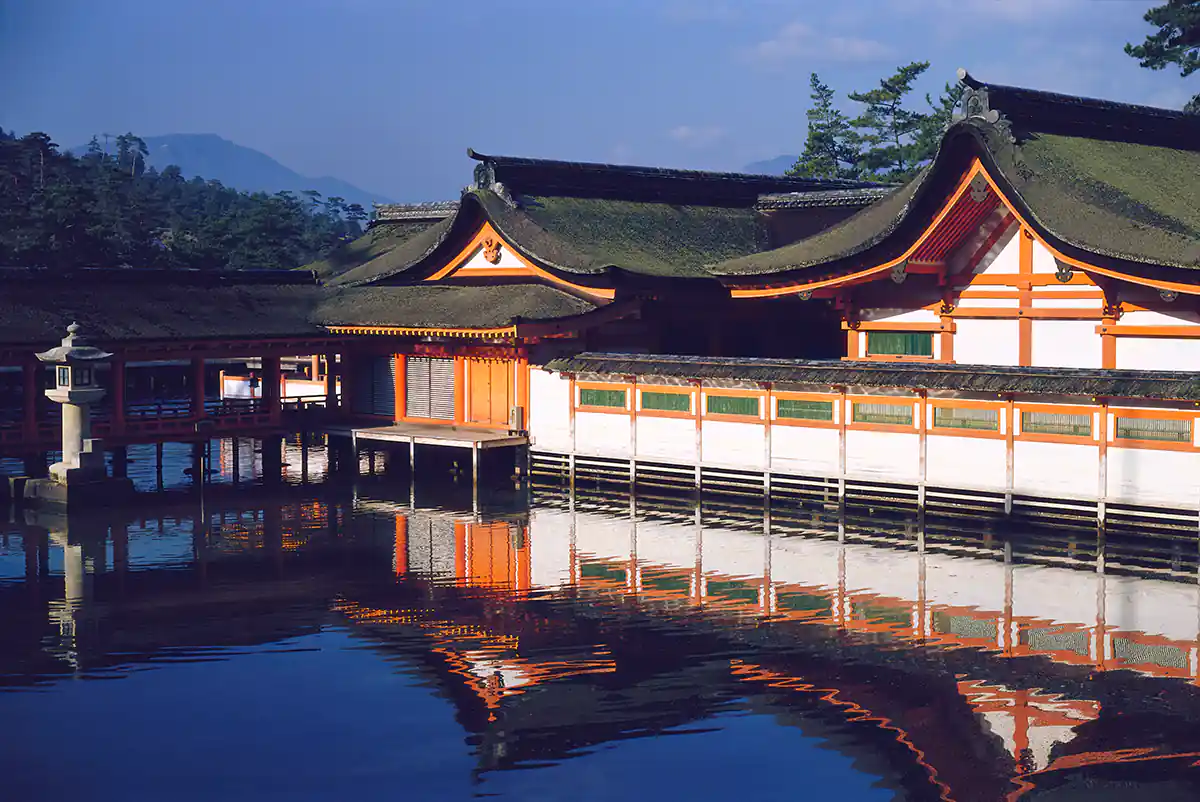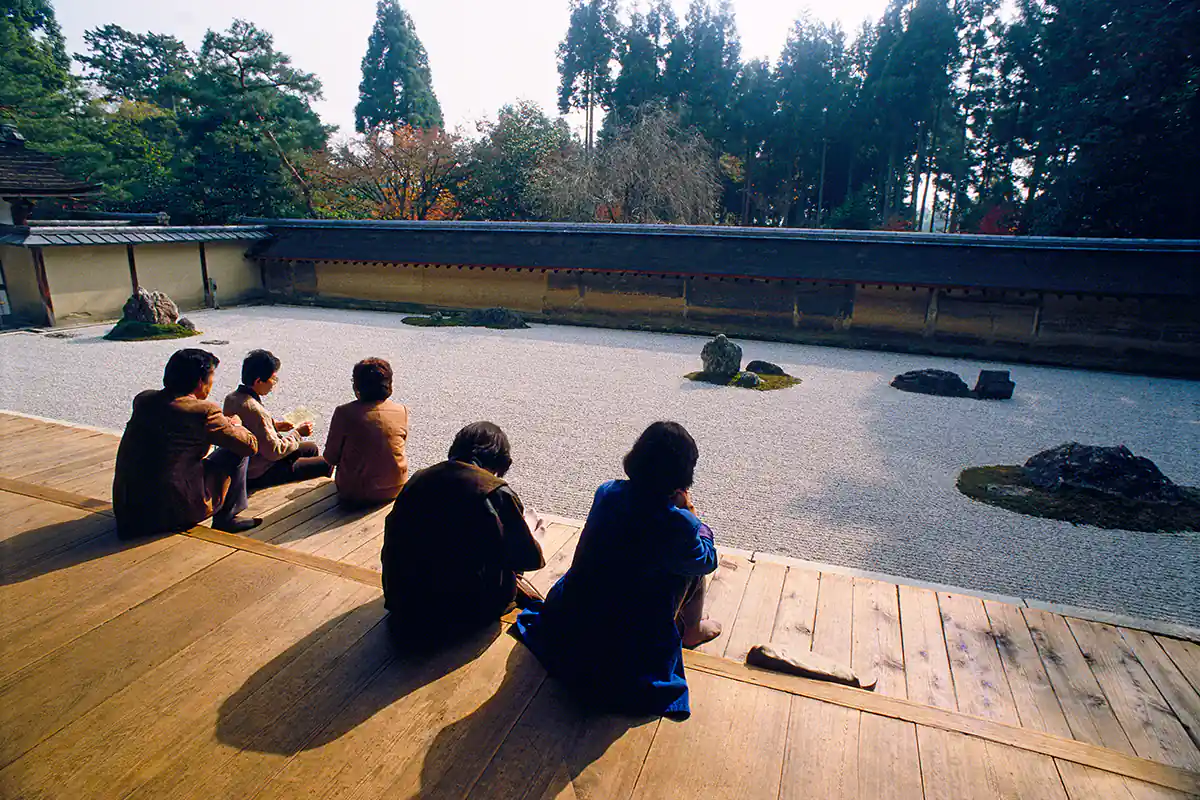Sacred Sites of Japan
Japan: Embracing History and Spirituality
Japan, with its rich history and enduring traditions, is home to sacred sites and pilgrimage destinations that draw seekers from across the globe. From ancient temples to revered shrines, Japan offers a journey through time and spiritual connection.
Beppu
A city known for its hot springs and its association with the Buddhist monk Kobo Daishi.
Hase-dera Shingon Buddhist Temple, Sakurai
A temple complex with a long history dating back to the 7th century. It is known for its beautiful gardens and its collection of Buddhist statues.
Ise
A city known for its Grand Shrine, one of the most important Shinto shrines in Japan. The shrine is dedicated to the goddess Amaterasu, the ancestress of the Japanese imperial family.
Ishi-no-Hoden, Himeji
A small stone building believed to be the oldest surviving wooden structure in Japan. It is associated with the Buddhist monk Shotoku Taishi.
Ishibutai Kofun, Asuka
A large keyhole-shaped tomb dating back to the 6th century. It is believed to be the tomb of Emperor Kinmei.
Ishiteji Temple, Matsuyama
A temple complex located on a mountaintop with stunning views of the surrounding countryside. It is known for its 88 stone steps, which pilgrims must climb to reach the temple.
Izanagi Shinto Shrine, Awaji Island
A shrine dedicated to the Shinto god Izanagi, who is said to have created the Japanese islands.
Izumo Taisha
A Shinto shrine dedicated to the god Okuninushi, who is said to have ruled Japan before the imperial family.
Kibitsu Jinja Shinto Shrine, Okayama
A shrine dedicated to the god Kibitsuhiko, who is said to have helped the legendary emperor Jimmu conquer Japan.
Kongofukuji Temple, Tosashimizu
A temple complex with a long history dating back to the 7th century. It is known for its beautiful gardens and its collection of Buddhist statues.
Kotohira shrine, Kotohira, Japan
A Shinto shrine dedicated to the god Kompira, who is said to protect sailors and fishermen.
Kumano Hayatama Taisha
One of the three Kumano Grand Shrines, dedicated to the god Hayatama.
Kumano Hongū Taisha
One of the three Kumano Grand Shrines, dedicated to the god Hongu.
Kumano Nachi-taisha
One of the three Kumano Grand Shrines, dedicated to the god Nachi.
Kurama-dera Temple
A temple complex located on a mountaintop with stunning views of the surrounding countryside. It is known for its association with the Buddhist monk Kobo Daishi.
Masuda Iwafune, Asuka
A large rock formation believed to be a sacred site for the ancient Asuka people.
Miyajima Island
An island known for its Itsukushima Shrine, which is built on stilts over the water. The shrine is dedicated to the goddess Benzaiten, who is said to protect sailors and fishermen.
Motoyamaji Temple, Motoyama
A temple complex located on a mountaintop with stunning views of the surrounding countryside. It is known for its association with the Buddhist monk Kobo Daishi.
Mt. Osore
Known as "Fear Mountain," it has religious significance due to its volcanic landscape and association with the afterlife.
Nagano
A city known for its Zenkoji Temple, which is said to house one of the three surviving Buddhist images brought to Japan by Prince Shotoku.
Okadera Buddhist Temple, Asuka
A temple complex with a long history dating back to the 7th century. It is known for its beautiful gardens and its collection of Buddhist statues.
Okinoshima Island, Japan
An island known for its Munakata Taisha Shrine, which is dedicated to the three goddesses of the Munakata clan.
Oshoro stone circle, Otaru, Hokkaido
A prehistoric stone circle believed to have been used for astronomical and religious purposes.
Ryoan-ji
A Zen temple garden known for its 15 rocks arranged in a bed of white gravel. The garden is said to represent the essence of Zen Buddhism.
Tomb of Christ, Shingo, Japan
A tomb believed by some to be the true tomb of Jesus Christ.
Yakuriji Temple, Yakuri
A temple complex with a long history dating back to the 7th century. It is known for its beautiful gardens and its collection of Buddhist statues.
Mountains with Sacred Significance
Mt. Asama
An active volcano located in central Honshu, Japan, Mt. Asama holds significance within Shinto traditions. Its eruptions are seen as both destructive and regenerative forces, shaping the landscape and embodying the power of nature.
Mt. Aso
Kyushu's Mt. Aso, the largest active volcano in the world, carries spiritual importance within Shintoism. Its vast caldera symbolizes the might and creative force of the kami (spirits or deities).
Mt. Atago
Located in the Izu Peninsula, Mt. Atago is a sacred site associated with fire deities and the Shugendo tradition, a blend of Shinto, Buddhist, and mountain ascetic practices.
Mt. Bandai
Mt. Bandai, an active volcano in Fukushima Prefecture, holds a place in Shinto beliefs. Its dramatic 1888 eruption serves as a reminder of the transformative power of nature and the need for respect toward the kami.
Mt. Chokai
Mt. Chokai, the highest peak in the Tohoku region, possesses spiritual significance within Shintoism. It represents a dwelling place of the kami and a connection between the earthly and divine realms.
Mt. Fuji:
An iconic mountain and active volcano, considered sacred in Shintoism, Buddhism, and other Japanese spiritual traditions.
Mt. Haguro
As one of the sacred Dewa Sanzan mountains, Mt. Haguro is a prominent pilgrimage site in Shugendo. Its association with death and rebirth makes it a place for spiritual contemplation and ascetic practices.
Mt. Haku
Mt. Haku, a dormant volcano, is revered as a sacred mountain in Shintoism. Its shrines and temples reflect its significance as a place where humans can connect with the divine.
Mt. Hiei
Home to the influential Enryaku-ji temple complex, Mt. Hiei is a sacred mountain for both Shinto and Buddhist traditions. It represents a place of spiritual training, contemplation, and historical importance within Japanese Buddhism.
Mt. Ishizuchi
The highest mountain on Shikoku Island, Mt. Ishizuchi is a sacred mountain in Shintoism. Its shrines and temples are destinations for pilgrims, and its peak offers a place to commune with the spirits of nature.
Mt. Iwaki
An active volcano and the highest peak in Fukushima Prefecture, Mt. Iwaki holds a place within Shinto beliefs. It symbolizes the power and majesty of nature, a place where the kami reside.
Mt. Kaimon
Mt. Kaimon, the highest mountain in the Southern Alps, is a sacred site within Shinto traditions. Its imposing presence evokes awe and respect for the natural world.
Mt. Katsuragi
This mountain range is revered in Shintoism, with shrines and temples dotting its slopes. It symbolizes the enduring connection between humans and the spiritual forces residing within nature.
Mt. Kirishima
An active volcano, Mt. Kirishima holds significance within Shinto beliefs. Its volcanic activity symbolizes both destruction and creation, reflecting the ever-changing nature of existence.
Mt. Koya
As the headquarters of Shingon Buddhism, Mt. Koya is one of Japan's most sacred mountains. Its temples, monasteries, and atmospheric cemetery make it a major pilgrimage destination and a place for spiritual practice.
Mt. Nachi
One of the Dewa Sanzan mountains, Mt. Nachi is a sacred site within Shugendo. Associated with the cycle of life and death, it's a place of pilgrimage and spiritual introspection.
Mt. Nantai
Mt. Nantai is a sacred mountain within Shintoism, located in Nikko National Park. Its summit shrine and scenic beauty make it a place for both worship and appreciation of nature.
Mt. Omine/Mt. Sanjogatake
This mountain range is an essential site in the Shugendo tradition. Its challenging terrain and ascetic practices make it a place of intense spiritual training and a symbol of the arduous path to enlightenment.
Mt. Ontaki
Mt. Ontaki is a sacred mountain associated with mountain worship traditions and Shintoism. It's a popular destination for pilgrims and hikers drawn to its spiritual significance and natural beauty.
Mt. Yoshino
Known for its cherry blossoms, Mt. Yoshino is a sacred mountain within Shugendo and Shintoism. Its temples, shrines, and scenic landscapes make it a place of both spiritual pilgrimage and natural appreciation.
Note:
Japan possesses numerous other sacred sites, both grand complexes and smaller shrines tied to local communities. Approaching these places with respect for Japanese culture and religious traditions is essential.

Martin Gray is a cultural anthropologist, writer and photographer specializing in the study of pilgrimage traditions and sacred sites around the world. During a 40 year period he has visited more than 2000 pilgrimage places in 160 countries. The World Pilgrimage Guide at sacredsites.com is the most comprehensive source of information on this subject.


